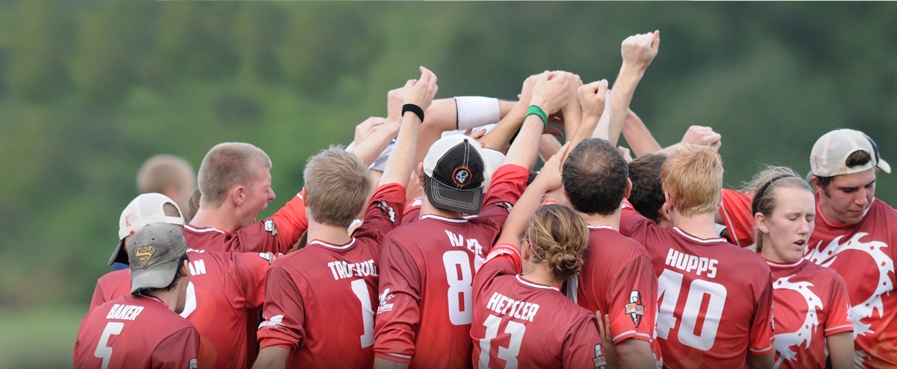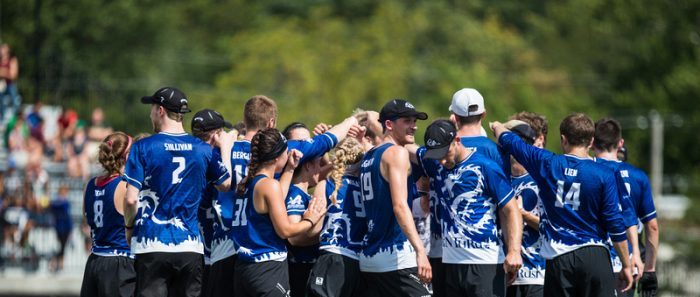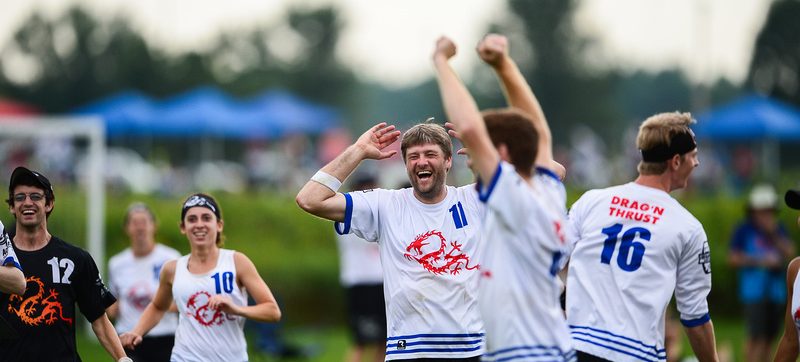By Austin Lien
There are two predominant throws in ultimate: forehand and backhand. In any given game, these two throws will combine for at least 95% of the total passes attempted. Generally, the backhand is thrown to the left side of the thrower, and the forehand is thrown to the right. As a result of this, a defensive strategy was born that is employed almost universally: force all of the other team’s players to throw one direction.
In the early stages of learning the sport, this direction is almost always to the right (read: force forehand). The forehand throw is generally a little more difficult for beginner players to control, while the backhand throw is a little more forgiving. I’ll leave it up to better throwers to break down the mechanics involved. The obvious conclusion here seems to be as follows : “If the other team is always allowing me to throw my forehand, I should practice to make sure the forehand is my best throw.” I’m sure there are some people out there who subscribed to this logic early on, and have reaped the benefits of being so practical. In my experience, it seems that more players favor one throw over the other “just because they’re already better at it.” This favoritism is so prevalent in ultimate that even at the highest level of competition, it’s usually obvious which throw an opposing player favors within just a handful of possessions.
This seems bad, right? If I know that Player X is always going to work to make sure his forehand is available, I should be at a defensive advantage, shouldn’t I? I don’t believe this is the case. The thrower, knowing full well that his favored throw is obvious, has a HUGE leg up on his opponent.

Borrowed from The Huddle. This would be a force backhand defense.
‘T’ is the thrower, ‘M’ is the marker, and the shaded area is being defended by the marker.
The defender responsible for forcing the thrower in one direction is referred to as “the mark.” Even under normal circumstances, the mark has a very difficult job. With his back to the rest of the players, he cannot allow any throws to be completed to the opposite side of the field, referred to as “the break side.” Every other defender relies on him to disallow any break side throws, or at least make them as difficult as possible. The mark accomplishes this by reacting to the thrower as well as any verbal cues he is getting from the sidelines. The thrower, conversely, is facing the field. He knows exactly what’s going on behind the mark, while the mark only has his best guess. With the other team’s defense relying so heavily on the mark, the thrower is keenly aware of the benefits of “breaking” the mark (completing a throw to the break side).
A competent thrower will provide misinformation to the mark by pivoting with his legs, faking throws with the disc or his shoulders, and sometimes even looking somewhere other than where he’s throwing. Turnovers are costly in ultimate, so the thrower has much more to lose if his gambit is unsuccessful. This dynamic between the thrower and marker can be viewed as a fast-paced version of a mind game like rock-paper-scissors. The thrower is trying to get the marker to choose incorrectly, and defend the wrong area of the field so he may complete a throw. The marker is trying to make all throws difficult without allowing any throws to the break side. Unfortunately, the marker is playing a tougher game with less information. To make matters worse, even if he picks correctly, he may still lose. This is where “your favorite throw” comes into play.
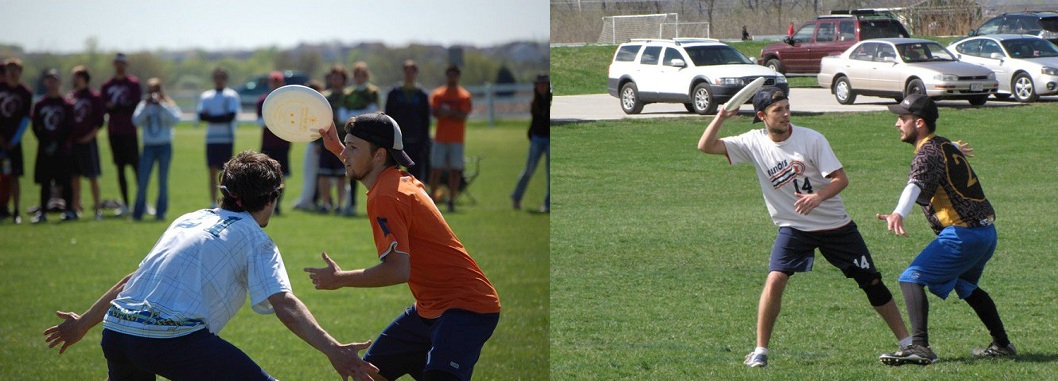
Very clearly advertising that I do not have this throw. I’m not even holding the disc correctly.
I’ll use myself as an example, since this concept was an enormous part of my development as a player. For the first four years of my ultimate career, my forehand was absolutely abysmal. I knew it, my teammates knew it, and my opponents knew it. Even at the end of my junior year in college, my skills were probably weighted about 80-20 in favor of backhand vs forehand throws. While I spent a lot of time outside of practice working on my severely impaired forehand throw, all of my in-game experience was being dumped into the backhand bucket. Not wanting to cost my team a turnover, I would make sure my backhand was available whenever it was possible. It worked (for the most part), and here is why I think that is:
Let’s go back to our rock-paper-scissors game. I, as the thrower, choose rock/backhand (duh), and the marker chooses paper/stop the backhand. I have lost the mind game, but I’m still throwing my best throw. If I manage to throw a completion, I’ve planted information in the marker’s head for the rest of the match up. The game is now way less fair. Every time I win with rock, the marker shifts further and further towards paper until eventually my weaker throw is completely unchallenged. As a thrower, this is your desired result. I’ve effectively neutralized the marker, and my team will benefit from it.
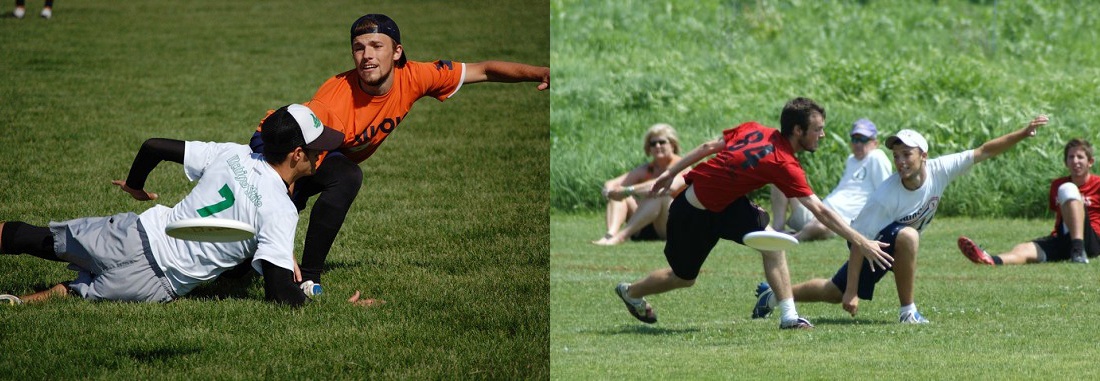
Throwing aggressive breaks early in a game is high-risk, but can give you the advantage later on.
To be a great thrower, you need to present a threat with any throw. That does not mean the threat needs to be equal. If you have an affinity for one throw over the other, that is an asset which you should continue to develop.
